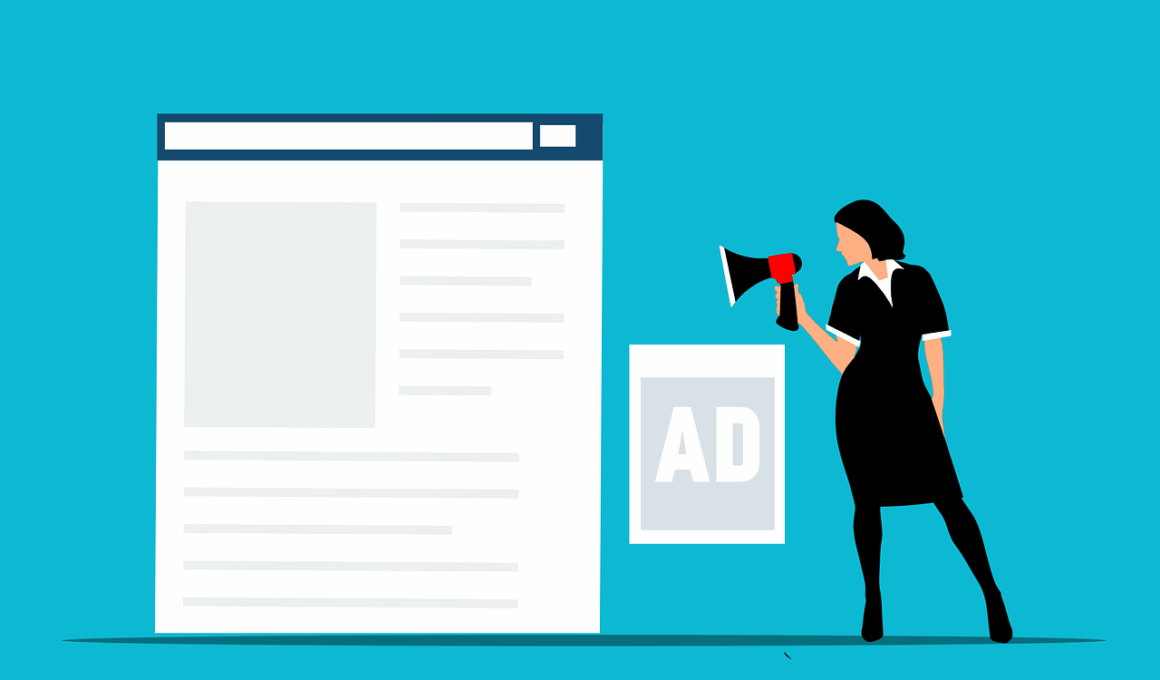Boosting Event Engagement Through Twitter Advertising Strategies
Twitter has emerged as a powerful platform for boosting event engagement, especially through targeted advertising strategies. To successfully leverage Twitter Ads, it starts with understanding your audience. Define your target demographic by determining factors like age, location, interests, and behaviors. Using Twitter’s analytics tools helps uncover these insights, allowing your content to resonate. Craft your messaging wisely since Twitter has a character limit that demands concise and impactful communication. Visual elements can greatly amplify engagement rates, especially images or videos that capture attention quickly. Engaging tweets and promoted content should encourage audience interaction, such as likes or retweets. Using relevant hashtags increases discoverability; therefore, consider including two to three popular tags to reach a broader audience. Twitter allows for various ad formats; explore standard tweets, video ads, or carousel ads that can showcase multiple products or highlights. Active monitoring of your ad performance can also provide valuable insights for adjusting your strategy in real-time. By leveraging Twitter Ads strategically, event organizers can achieve significant boosts in engagement, ultimately driving attendance and increasing awareness through captivating content and responsive advertising efforts.
Promoting your event on Twitter requires a systematic approach for optimal results. Consider identifying key influencers or partners within your industry who can amplify your reach by sharing your promotional tweets. Collaborating with these individuals or brands facilitates a wider audience engagement. You can also create tailored promotions specifically designed for Twitter followers, such as discount codes or exclusive content, encouraging users to interact and share your event details. Timeliness is crucial; begin your advertising efforts well before the event date to create buzz. Schedule tweets to maintain a consistent presence in users’ feeds, maximizing visibility. Engaging directly with your audience is vital, as responding to comments or inquiries not only builds rapport but encourages more interactions. Utilizing Twitter polls can also stimulate engagement by directly involving your audience in discussions around your event. Moreover, consider launching a countdown campaign with daily reminders leading up to the event. This strategy generates excitement and anticipation. The goal is to keep the conversation going, ensuring that followers remain engaged and informed about all event-related updates as they approach the big day, leveraging the dynamic environment that Twitter provides.
Crafting Compelling Ads
Crafting compelling Twitter Ads is key to driving engagement for your event. Start by identifying the specific objectives you aim to achieve with your advertisements. Whether it’s increasing ticket sales or driving website traffic, having clear goals helps tailor your messaging. Focus on a strong call to action (CTA) that directs users to take immediate action, reinforcing what they stand to gain. A visual strategy is essential; choose high-quality images or engaging videos that represent your event authentically. Utilizing eye-catching imagery captures attention and leads to higher engagement rates. Alongside visuals, the textual element must complement the imagery, succinctly conveying the event’s value proposition. Emphasizing exclusivity or urgency can also influence potential attendees to act quickly. Analyze competitor ads to gain inspiration, understanding which strategies resonate within your niche. A/B testing different ad variations can unveil which messages or visuals incite the most engagement. Continuous performance tracking provides insights to fine-tune your strategies, ensuring that your Ads reach peak effectiveness as the event date approaches. Audience feedback can further guide your advertising approach, allowing for adjustments that respond to real-time interactions and preferences.
Utilizing Twitter’s advanced targeting options enhances the efficacy of your advertising campaigns significantly. Options such as tailored audiences or interests-based targeting can hone in on your target demographic, ensuring your ads are seen by individuals most likely to attend your event. Implementing geolocation features allows you to reach users within a specific area, ideal for local events. This sort of targeting maximizes budget efficiency and drives audience engagement since it places your message in front of potential attendees. Another strategy includes retargeting; users who have previously interacted with your brand or website can receive tailored ads reminding them of your event. Additionally, consider creating custom audiences based on user behavior insights, tailoring your approach further to match engaged individuals’ interests. When using Twitter ads, A/B testing is critical in optimizing your targeting strategies. Experimenting with various demographics and locations provides invaluable data that helps you refine your approach. Ultimately, by effectively utilizing Twitter’s targeting capabilities, you can maximize event engagement, ensuring that your promotional efforts resonate and lead to an increased turnout at your event.
Creating Shareable Content
Creating shareable content is a fundamental aspect of enhancing event engagement on Twitter. Users are more likely to spread content that offers value, entertainment, or useful information. Start by sharing behind-the-scenes content about your event to provide an insider perspective that encourages sharing. Engaging graphics or infographics that showcase event highlights can also make your posts more appealing. Encourage user-generated content by launching promotional contests where attendees share their excitement or experiences, using a specific hashtag related to your event for tracking. This encourages organic sharing and broadens your reach within users’ networks. Offering timely updates on speakers, schedules, or interactive activities provides valuable information that followers want to share. Twitter threads can effectively relay important information while making it easily digestible. Each tweet should be concise yet impactful, fostering user engagement. Furthermore, initiating conversations through questions or polls around event-related topics invites responses, adding another layer of shareable dialogue. The more involved users feel, the more likely they will disseminate your content within their circles, significantly enhancing the overall event presence on Twitter.
Engagement doesn’t stop after an event concludes; in fact, Twitter provides a platform for continued interaction. Consider creating a follow-up campaign that thanks participants for attending while soliciting their feedback. Encouraging post-event discussions fosters community and loyalty among your audience. Sharing highlights or key takeaways from the event in the form of video recaps or tweet threads can keep individuals interested in future events. This content serves dual purposes: expressing gratitude and showcasing the value of attending. Advocating hashtags during your events allows easy tracking of audience interactions, serving as a foundation for engaging future campaigns. Ask attendees to share their experiences or tag friends in your event-related posts, creating a vibrant online community. Hosting follow-up Twitter Spaces to discuss event materials or related topics can further extend engagement. These virtual conversations provide a platform for deeper discussions while allowing attendees to connect with speakers and other participants. Building on the momentum of your event through ongoing engagement strategies helps solidify your brand presence and nurtures relationships with attendees, creating a lasting impact that outlasts the event itself.
Measuring Success
Measuring the success of your Twitter advertising efforts is essential for understanding their impact. Utilize Twitter Analytics to assess your ad performance metrics such as impressions, engagements, and click-through rates. Evaluating these statistics helps determine which ads generated the most engagement and why. Set specific benchmarks aligned with your initial goals, allowing a clearer view of success and areas for improvement. Feedback from participants can also provide qualitative data; encourage attendees to share how they discovered your event. Tracking engagement through specific hashtags during and post-event can reveal audience sentiments and broaden insights into your event’s reach. Based on data analysis, continually refine your strategies for future campaigns. Setting follow-up surveys directly in your tweets encourages participant responses, creating direct conversations around their experiences. The accumulation of both quantitative and qualitative insights ultimately guides your future Twitter advertising initiatives. These metrics and feedback gain from your event help tailor your marketing strategy, ensuring each subsequent campaign builds upon past successes and optimally enhances engagement and attendance at your future events.
In summary, utilizing Twitter Ads effectively can dramatically enhance engagement for events. By understanding your audience, crafting compelling ads, utilizing targeted strategies, and creating shareable content, you can maximize your event’s visibility and impact. Engaging with your audience both before and after the event solidifies relationships, creating a community that is eager for future interactions and engagements. Implementing continuous measurement and analysis of your strategies allows for ongoing refinement and improvement, ensuring your Twitter advertising efforts remain relevant and impactful. Overall, engaging audiences through Twitter can transform how events are promoted and experienced, ultimately achieving greater attendance and success. As platforms like Twitter continually evolve, staying updated with new features and trends is vital. Embrace creative approaches to outreach and marketing through Twitter, ensuring your event stands out in a crowded digital landscape. Effective engagement strategies extend beyond simply promoting events; they build lasting relationships and communities. By strategically leveraging Twitter Ads tailored to your audience’s preferences, you can create memorable experiences that encourage attendance and foster loyalty, turning one-time visitors into lifelong supporters of your brand.


